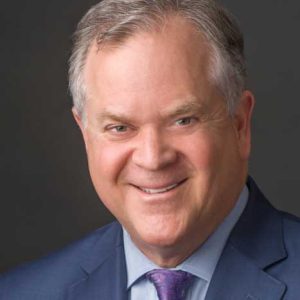What To Do When There’s a Verbal Promise, a Death, and No Intention Form?
Summary: What would you do if you had a verbal commitment for a planned gift—and the donor died before putting it into writing? It happens more often than you’d think. Here’s a real-world example of how stewardship can save the day.
“How do I find out if Stuart remembered us in his estate plan?”
That is the tough question a new client asked in our first meeting. How would you answer it?
Here is the situation as described by the client, along with some additional observations.
The client, a small nonprofit with no active planned giving program and no full-time development personnel, had been asked five years ago by a long-time annual $10,000 donor (we will call him “Stuart”) for information about remembering the nonprofit in his will. Stuart at the time stated his intention to do so. Stuart had a good relationship with the CEO of the nonprofit and was a very passionate supporter of the nonprofit’s mission.
After the verbal commitment, the planned giving information was sent to Stuart along with a cover letter, which was in the nonprofit’s files. But the nonprofit never received a gift intention form or any written gift confirmation. All they had was the verbal promise.
Like many CEOs, this CEO wears many hats and is going all the time. Nonetheless, over the intervening years, the CEO met with this mission-driven donor annually. However, there was no specific discussion regarding the planned gift. Stuart never raised it again. The leader had no knowledge if Stuart remembered the nonprofit in Stuart’s estate.
The Worst-Case Scenario Happens
Stuart died a little more than a year ago. The nonprofit did not learn of Stuart’s death until five months after he had passed, so no one from the nonprofit attended the funeral or expressed any condolences to the family.
The nonprofit heard nothing from the family. They did not receive any notices, legal or otherwise, about being remembered in Stuart’s estate plan. All they had to go on was Stuart’s verbal commitment, years before.
“I need to travel to Dallas, where Stuart’s daughter lives (we will call her Dorothy). Should I try to contact her?” the CEO asked.
“Have you ever talked with Dorothy?” I inquired.
“Yes, on a couple occasions when I was visiting Stuart. I have her phone number,” responded the CEO. “But if I call her, what will I say? Would I want to visit and if so, what would I say if she asks why I want to visit? What if Dorothy gets mad at me for even calling her? Will I appear like some ‘ambulance chaser’ just trying to get more money from a dead donor? If Dorothy agrees to see me, what will I say during the visit? How do I raise the question of, ‘Did Stuart remember us in his estate?’”
The Stewardship Factor
Good questions! I encouraged the CEO to contact Dorothy for two primary reasons:
First, since Stuart informed the CEO of his intentions and made a verbal commitment, it is necessary stewardship to try to be sure Stuart’s final wishes are carried out.
Second, as CEO and the person responsible for the nonprofit’s financial wellbeing, it is necessary to try to discover if such a provision was made by Stuart to benefit the nonprofit.
In the conversation I also discussed the possibility that the will had already been filed at the courthouse for probate purposes, but even if it had, that would not cover all the ways Stuart could have remembered the nonprofit. I also encouraged the CEO to contact the nonprofit’s attorney to seek legal advice. Lastly, I asked the CEO to gather all the information he could regarding the relationship and communications with Stuart.
“But in the end. I think you are going to have to contact Dorothy,” I concluded.
After another conversation with me discussing all the questions and options, the CEO had worked out his plan.
He would call Dorothy, explain that he was going to be in her area and would like to come by to personally express his condolences for her father’s passing. He would apologize for not doing so sooner and explain why. He would state how important Stuart’s relationship and financial support was to the nonprofit. During the hoped-for visit, the CEO would ask Dorothy’s permission to feature remembrances of Stuart on one of the CEO’s daily radio programs. (I thought that was a really good idea). The CEO would tell Dorothy of his conversation with Stuart about his estate plan, Stuart’s verbal promise, and respectfully ask if Stuart had remembered the nonprofit. Of course, one of the remembrances the CEO hoped to include was that Stuart cared so much for the nonprofit’s mission that he made provisions for the nonprofit in his estate plan.
No. What Check?
Follow up is key. With that plan in mind, the CEO made the call.
After exchanging greetings, Dorothy quickly asked, “Did you receive the check?”
“No. What check?” the CEO responded.
“The check we sent from my father’s estate was never cashed so we cancelled it and sent another. Did you receive it?” she asked.
After a few more questions, it was discovered the checks had been mailed to an old address. The nonprofit had moved three years ago. Forwarding information had expired. Dorothy had no information about the new location.
This “really tough conversation” became easy, pleasant, and very warm, as did the visit, and as did the radio program.
Yes, the verbal promise worked out, and the generous gift from Stuart’s estate finally arrived.
The lessons are many. Stay true to your mission. Stay close to your donors. Build relationships with them and get to know their families. Respectfully follow-up on planned giving inquiries in a timely manner. When appropriate, seek documentation of such gifts. With permission, thank and recognize planned giving donors while they are living. Have real reasons to reach out to donors and their families, other than fundraising.
And when necessary, put together a thoughtful and respectful plan, then contact the daughter as this CEO very capably did.




